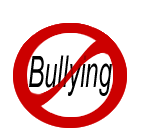NJ BULLYING.org
Selecting Effective Anti-Bullying Programs
A Guide for School and Agency Administrators
New Jersey Coalition for Bullying Awareness and Prevention supports adherence to well-founded prevention principles and practices to ensure effective program outcomes. This "critical criteria" checklist was developed by the Training Project Committee of the NJ Coalition as a tool for school administrators and agency directors to use in selecting anti-bullying programs.
The key principle to use in selecting programs is to look for comprehensive and ongoing approaches, as opposed to 'one-shot' events or short-term projects, which are unlikely to have lasting impact or to create cultural change. Specifically, consider whether the program has the following characteristics:
-
A framework based on empirical research and a clear and sensible theory.
-
Involves the entire school community.
-
Addresses the role of adults in childhood bullying (e.g., modeling of bullying behavior, implicit acceptance or explicit endorsement of childhood bullying and inaction or inadequate response to bullying).
-
Integrated elements (program components work well together, fit an overall framework).
-
Long-term and adequate intensity (e.g., years not months; school-wide effort and impact).
-
Includes baseline measurements of the nature and extent of bullying in the setting (e.g., anonymous self-report surveys and/or student focus groups) and follow-up assessments to determine the effectiveness of the interventions.
-
Developmentally appropriate (e.g., language and materials used varies for children of different ages, addresses how bullying changes from pre-school through high school years).
-
Culturally responsive (e.g., accounts for program-relevant differences in communities and populations; affirming and strengthening cultural, racial and linguistic identities).
-
Community-based (extends beyond the school/agency, partners with other community organizations).
-
Parent/caregiver/family-oriented (e.g., helps parents/caregivers address bullying in home and community environments; cultivates partnerships between schools and families).
-
Actively supports at-risk or targeted students (e.g., by inclusion, by identifying and supporting individual strengths and interests).
Ask:
-
Does the program foster a whole-school approach, with collaboration between administration, counseling staff, teaching staff (including coaches) and support staff (clerical, cafeteria, custodial, security, etc.), parents, community members and students?
-
Does the program foster a comprehensive approach, with interventions at the level of the whole school, the classroom (including teams and clubs) and the individuals who bully and are bullied?
-
Does the program emphasize training for all staff on identifying, reporting, confronting and imposing consequences for bullying behaviors?
-
Does the program empower student bystanders to withhold support from or actively dissuade bullying behavior?
-
Does the program include measures (such as character education, responsive school/classroom and collaborative learning) to improve school climate, particularly the ways in which students, teachers, administrators and other school staff communicate with one another?
-
Does the program address different forms of bullying (e.g., physical, verbal, relational, cyber-bullying)?
-
Does the program cover sexual harassment, bullying based on race, culture, gender-identity, disability and other forms of bias-based bullying?
-
Does the program emphasize measuring bullying in the school or setting, and recommend specific measurement approaches (such as surveys or focus groups)?
-
Does the program emphasize and offer specific suggestions for rules and consequences for bullying (such as a set of graduated negative sanctions as well as positive sanctions for engaging in kind and considerate behavior) and ensure that rules and sanctions are fairly and consistently enforced?
-
Is the program proactive, not only responding to bullying incidents when they may become known but creating a telling school in which students and staff are actively encouraged to report incidents of bullying?
-
Is the program preventive, addressing conditions which lead to bullying (e.g., inadequate support for potential targets of bullying; clique and gang activity; negative adult role models)?
-
Does the program emphasize the importance of administrative approval, of identifying clear leadership for the anti-bullying work and assuring that the leadership group receives ongoing support?
-
Does the program include training and materials specifically for parents, caregivers and families?
-
Is the presenter familiar with New Jersey's laws regarding bullying, hazing, harassment and discrimination and does the program support the mandates for compliance with the law and identify violations?
